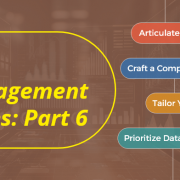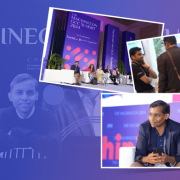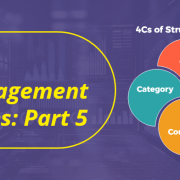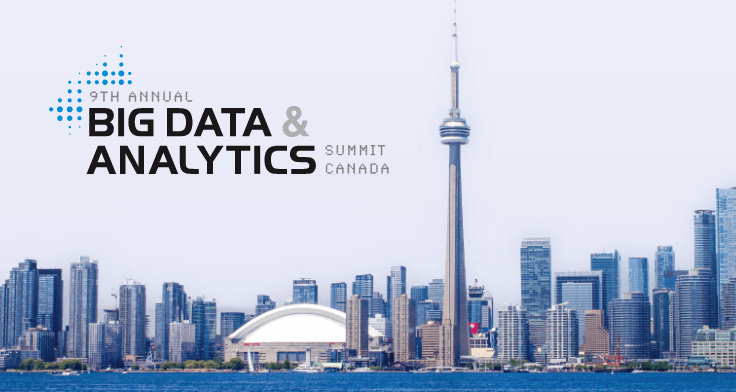I had an opportunity to participate in the 9th Annual Big Data & Analytics Summit in Toronto, Canada – that brings together both the public & private sectors to have a dialogue on the latest trends, business successes, innovation, and related capability requirements. This was my first exposure in the Canadian market as we continue to expand our reach to service clients in North America with business-centric data & AI solutions. Here are my takeaways from the summit:
-
Good decisions made on bad data, are just bad decisions you don’t know about yet
SCOTT TAYLOR – The Data Whisperer has a unique perspective on how to master the language of business data which is essential to ensure your leaders are getting the results from your D&A investments. He advocates pursuing data “truth before meaning” – in other words – you must first do the hard work around data quality, master data, & related disciplines before you move to the more glamorous ones around machine learning & AI.
And if your business leader or CFO is unable to fund the “truth”, then you need to get inspiration from Scott on how to make your case, so they get it! He provides linguistic tools & guidance to connect any company’s strategy with their data management strategy. You may want to explore his book for the nuggets of wisdom pulled from his experience working with organizations such as Nielsen, D&B, & WPP/Kantar. Or better yet, have him speak at your company!
-
If your CEO is unhappy with the results from the CDAO role, you may have your operating model wrong
Despite widespread adoption of the CDO/CDAO role in various industries, a 2023 Data & Analytics Leadership Executive Survey finds that only 35.5% of organizations report success in the CDAO role and only 23.8% report they are doing enough to ensure responsible & ethical use of data within their organization & industry.
So, it was refreshing for me to hear a success story from Sandeep Kumar, MMA, CFA, CDAO of the Retail & Wealth business at Scotiabank. Close alignment between data & analytics, technology & business teams; focus on practical analytics; and collaboration with finance were key to their success. Dealing with legacy technology, being proactive with data & ethics, and assimilating talent were their main challenges.
A key observation was that the CDAO role reports to the Chief Risk Officer in the bank with a clear delineation from the CTO. Clearly banks are in the business of managing risks, so it made sense. But an even more compelling model would be for the CDAO to report into Enterprise Strategy/COO, or directly to the CEO. Unless you are in the technology business, keep the CDAO reporting separate from the CIO/CTO to bring data, adoption, & value closer to business.
-
Initiate Responsible AI in your organization to prepare for the inevitable regulations
The rapid advance of generative AI has drawn the attention of regulators across the world. Stanford university’s 2023 AI Index shows 37 AI-related bills were passed into law globally in 2022. More regulations such as EU AI Act & Canada’s Bill C-27 are coming up. These regulations seek to broadly define AI, protect individual rights, classify risks, and require governance measures including internal processes, impact assessments, and penalties.
Several speakers – from government to private sector to technology companies – emphasized the need for business leaders to adopt Responsible AI in their organization. Responsible AI helps companies design & operate systems that align with their values & widely accepted standards of right and wrong. It means embracing principles of fairness, privacy & security, ethics, accountability & transparency throughout an AI project lifecycle as shown by Scotiabank. It appeared that Financial & Insurance sectors in Canada were the early adopters whereas public sector may be in the late majority.
Recommendations include creating & instilling data ethics framework; explicitly reviewing decisions where humans are on the loop, in the loop or out of the loop to balance accountability, safety, and speed; and taking advantage of various consortia. For example, IBM has an explainability toolkit & more recently Singapore Monetary Authority released Veritas Toolkit 2.0 for financial institutions. If done correctly Responsible AI can help companies scale their AI efforts, identify & fix problems early, and facilitate innovation for business.
-
Design explainability into AI models to simplify conversations with business & gain acceptance
It was very interesting to listen to Eric Lanoix, FRM, an applied mathematician & problem solver, on the topic of increasing customer, business, and government trust in the use of AI in high impact & regulated applications like credit underwriting. If you approve or disapprove someone’s credit application using an AI recommendation, you better be able to explain why to auditors & regulators – and for that your model needs to be fully interpretable.
High performant models such as Neural Networks are low in interpretability & will not pass muster with emerging regulations. He shared an example formulation of a fully interpretable basic ExNN model resembling logistic regression using three factors – credit score, asset price, income – affecting credit decisions. I continue to realize the importance of business translation skills in ensuring stakeholders understand AI. Eric’s Quantitative Risk Analytics team offers innovative quantitative finance solutions to both internal & external partners including an innovative model-as-a-service. Worth exploring further.
-
Innovation has different forms – you can innovate with approach, design, tool, or technology
Innovation to me means finding valuable ways to solve new & existing problems. I’ve often heard that innovation requires new technology, more funds, or a lab – while it’s true that some innovations require these resources, it is often more important to be resourceful & persistent. Here are four useful ideas that I gathered from the event that may spark innovation:
- Olga Tsubiks, Director, Strategic Analytics & Data Science, RBC shared her thoughts on driving strategic workforce planning using big data. One of her main ideas was to look at the state of your business (rapid growth, steady growth, decline, reinvent) & then use relevant data (market leads, client opportunities, workforce data, and acquisition data) to approach planning insights. Infocepts Employee360 supports such analysis.
- Paul Moxon, Chief Evangelist, Denodo, shared his thoughts on adopting a logical data architecture design due to fast-growing data & rapid technology evolution. Organizations should accept that the future is distributed & diverse & separate business view of data from physical data storage. This can be done through design of data fabrics in organizations that connect to various systems to get real-time data.
- Almost everyone has data quality challenges. Vicky Andonova, Anomalo, shared their thoughts on why legacy data quality approaches no longer work when scaling data quality. I saw a demo of the tool & could appreciate why rules- & metrics-based approaches are no longer sufficient. You must take advantage of automated machine learning models & Anomalo has a noteworthy tool for unsupervised data monitoring.
- Microsoft introduced Fabric & its capabilities. Between OneLake, OpenAI Service & an integrated ecosystem, Microsoft is enabling data & AI innovation to help businesses get results faster while claiming to lower costs. The speed at which these technologies are evolving should prompt IT leaders to rethink how they choose to invest & innovate with technology. Questions in the room gave me a sense that several businesses are wondering if their data would be used beyond their own needs & boundaries.
-
Purpose matters
Finally, I want to close by sharing observations from two thought-provoking sessions:
Teresa D’Andrea, Director General, Service & Data Modernization, Transport Canada – Transports Canada shared their approach for service design & modernization. It is grounded on the concept of designing for humanity where everything we build is to service some end user goal while rules, tools, and data are a means to fulfill them. I appreciated their focus on “consistent user experience” & giving the internal teams the time & space to evolve the backend to meet the user needs. How many leaders think like that?
Dan Kershaw & Vanitha Lucas shared the partnership story between Viz for Social Good & the Furniture Bank. This is an excellent example where data & the power of storytelling is used to influence human behaviors – raise awareness & funds – to bring impact. What’s amazing to me is that the work here was done by volunteers – including Hemal Sheth, an Infoceptian – from 7 countries, each perhaps driven by the purpose to do good.
Recent Blogs

Essential Tips for Telling Data Stories to Executives: Part 6 of Data Management Blog Series
July 24, 2024

Global Capability Centers Lead the Way in AI Innovation: Highlights from 2024 GCC Summit
July 18, 2024

4Cs of Structured Data: Part 5 of Data Management Blog Series
July 11, 2024

Full Stack Data Products: Bridging the Insight-to-Action Gap
July 9, 2024


